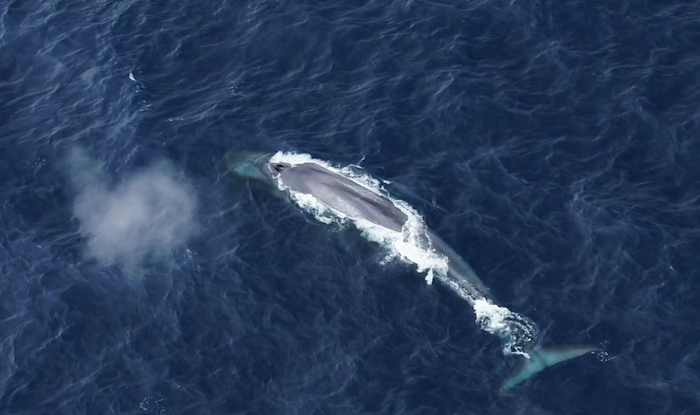
New insights into the behavior of Antarctic blue whales
Studying rare species can be a significant challenge for researchers, particularly when the subject is as elusive as the Antarctic blue whale. Researchers have strived for years to find humane ways to tackle this challenge. In 2013, Dr. Virginia Andrews-Gold and her team managed to successfully deploy satellite tags on two of the rarely-sighted creatures.
The ten-year-old data has now been released by Dr. Andrews-Goff and her colleagues at the Australian Antarctic Divison, publishing the satellite tracks in the Biodiversity Data Journal. The data demonstrated to the United Nations International Court of Justice that the research can be conducted without killing whales. The research also sheds light on the logistical challenges of locating, tagging, and tracking the Antarctic blue whale.
“This is a unique data set that was incredibly challenging to get, and, unfortunately, for 10 years no-one has been able to generate more data,” said Dr. Andrews-Goff. “We know very little about the movement and distribution of Antarctic blue whales, where they migrate, where they forage and breed, and we don’t understand the threats they might face as they recover from whaling.”
Whilst tagging and tracking the creatures is certainly no easy task, the most significant challenge is finding them in the first place. An estimated 90 percent of the Antarctic blue whale population (approximately 290,000) was killed in commercial whaling throughout the 1960s and 1970s, leaving less than 2,280 individuals remaining by the late 1990s.
To tackle this challenge, cutting-edge acoustic tracking techniques were used to detect whale calls and estimate their location from up to 1,000 kilometers away. Once tagged, the recorded tracks revealed that the whales traveled 1,390 kilometers in just 14 days, and 5,550 kilometers across a 74-day period – moving at an average of 100 kilometers per day.
“What became obvious is that these animals can travel really quickly,” commented Dr. Andrews-Goff. “If you consider how far and fast these animals moved, protecting the broader population against potential threats will be tricky because they could potentially circumnavigate Antarctica within a single feeding season.”
Thanks to new analytical method innovations in recent years, researchers have managed to gain some additional behavioral context from the data. Through these techniques, two separate movement rates were noted – a regular 4.2km/hr rate and a slower speed of 2.5km/hr, understood to correspond with searching and foraging behaviors.
“It looks like the whales might hang around in one area to feed and then move quickly to another area and hang around there for another feed,” explained Dr. Andrews-Goff.
She said that despite the small sample size, the satellite tracks will assist greatly in researchers’ understanding of the blue whale foraging ecology, movement rates, feeding habits, and habitat preferences. The findings will inform a further assessment of Antarctic blue whales, due to begin in 2024.
Image Credit: Australian Antarctic Division
—-
By Calum Vaughan, Earth.com Staff Writer
Check us out on EarthSnap, a free app brought to you by Eric Ralls and Earth.com.












